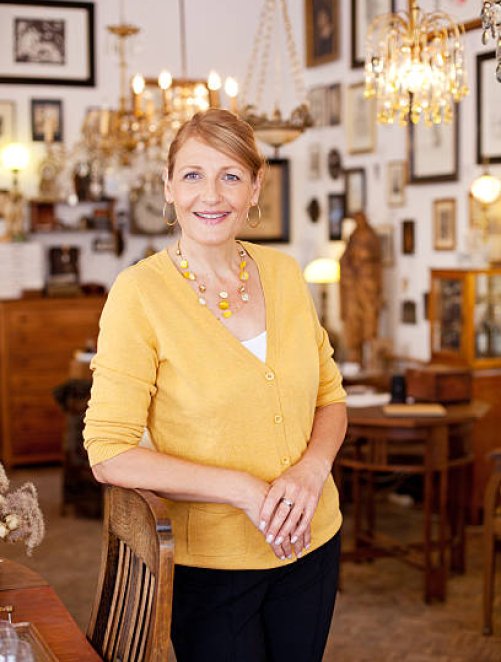

















Terracotta Statue of Sitting Woman
This is a sitting woman figure with a black mask painted over eyes and black painted beads as a necklace. She is in sitting position with circles that contain geometric designs within, over breasts. She has red raised bumps on both shoulders, holes poked to represent teeth, Stump legs and tiny short arms with lines carved in as fingers. It's hard to make out but almost looks like a black stamp of some kind that is faded on the bottom. Only 3 colors (red/black/tan). Very heavy (weighs 8 lbs & 12.05 oz) material but sounds like she could be hollow. The material underneath on her bottom looks like a pink color.
18" High x 6" Wide x 7 1/8" Thick
Secondhand Store
Yes


Hello,
Your item is a terracotta statue of a seated woman, stylistically resembling figures from Pre-Columbian West Mexico, particularly from the Nayarit or Jalisco traditions (circa 200 BCE – 500 CE). These cultures are known for producing highly expressive ceramic figures, often depicting women adorned with body paint, jewelry, and ceremonial markings. The use of red slip, incised details, and geometric motifs over the breasts, along with the posture and facial treatment, aligns with the aesthetics of shaft tomb cultures in this region. The short arms, stump legs, and heavily stylized face—complete with a painted mask—support this cultural attribution, though it is not uncommon to find modern or tourist-replica pieces made in similar style.
The piece, measuring approximately 18 inches high and weighing over 8 pounds, is substantial in size and likely created with decorative or symbolic intent. While the carving and form are evocative, elements such as the vivid coloration, superficial incised decoration, and overall condition may suggest a 20th-century reproduction. The fact that it was acquired from a secondhand store further supports this hypothesis, and without archaeological provenance or scientific analysis (e.g. thermoluminescence dating), its authenticity as an ancient object remains uncertain. The faded mark on the base could point to a studio or workshop stamp rather than a cultural origin.







